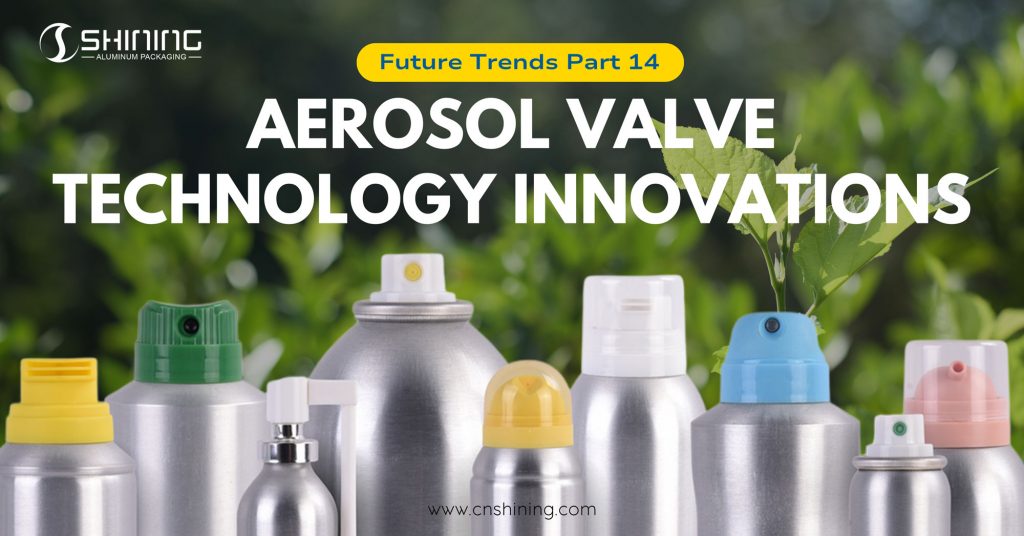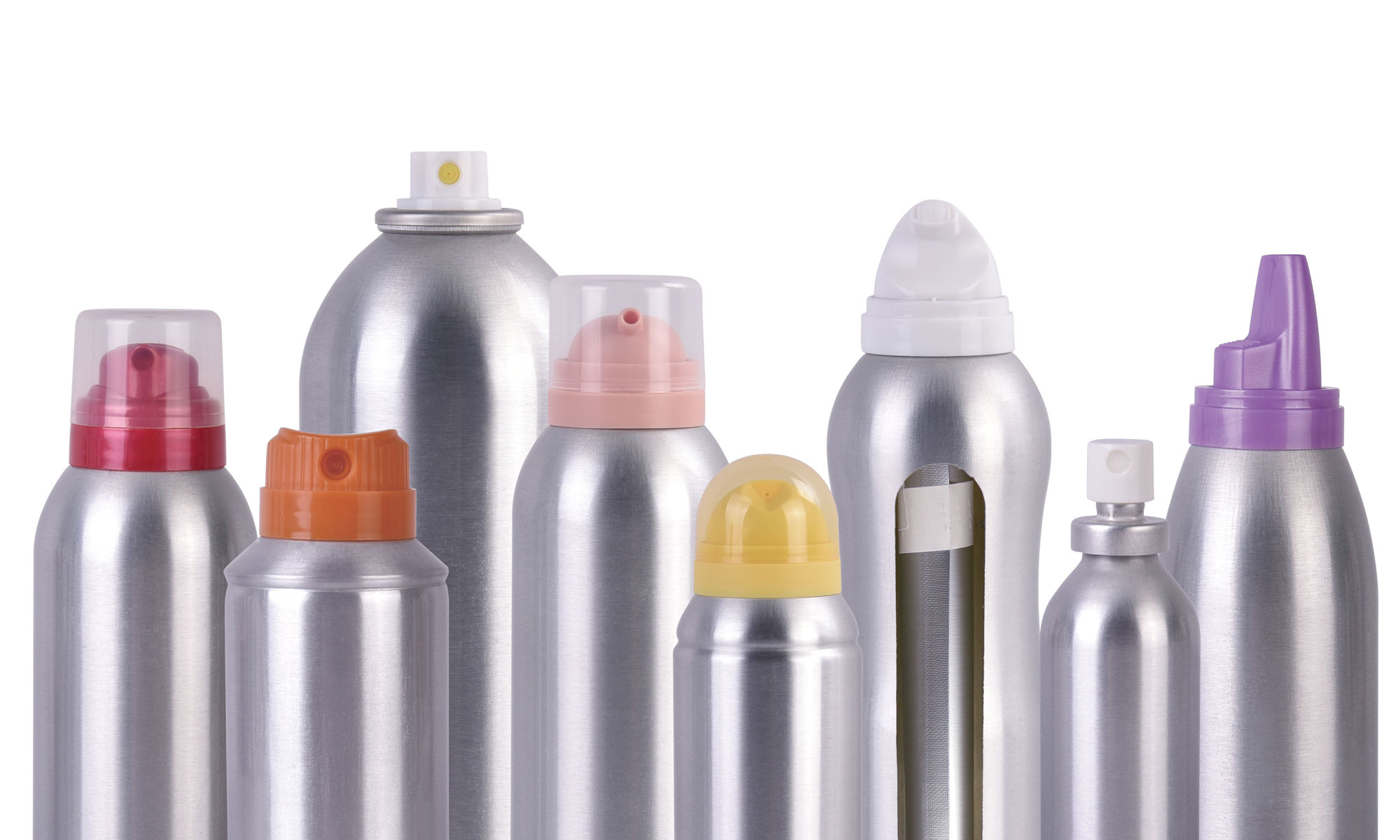Introduction : L'évolution de la technologie des valves d'aérosols
Les valves aérosols sont un élément clé de la vie quotidienne depuis des décennies, des produits de soins personnels aux nettoyants ménagers. Mais, comme toute technologie, les valves aérosols évoluent en permanence. En tant que fabricant de valves aérosols, nous constatons cette évolution chaque jour dans les produits que nous développons et fournissons. L'avenir des valves aérosols réside dans de nouveaux matériaux, des conceptions plus durables et des fonctionnalités encore plus intelligentes, visant à répondre aux préoccupations environnementales et aux attentes des consommateurs toujours croissantes. Dans cet article, nous explorerons les dernières tendances en matière de technologie et d'innovation des valves aérosols, offrant des informations aux fabricants, aux fournisseurs et aux utilisateurs finaux.
Progrès technologiques : repousser les limites de la conception des valves d'aérosols
L’évolution de la technologie des valves d’aérosol est étroitement liée aux améliorations des matériaux et à l’efficacité de la conception. Traditionnellement, les valves d’aérosol étaient constituées de composants de base tels que des actionneurs, des tiges et des joints, tous conçus pour libérer des produits sous pression en toute sécurité. Aujourd’hui, les fabricants repoussent les limites de ces composants avec des matériaux de pointe et des pratiques de conception plus intelligentes. Par exemple, les valves d’aérosol modernes sont désormais dotées de matériaux avancés tels que des thermoplastiques durables, qui contribuent à réduire les risques de corrosion et à améliorer la durée de vie du produit. Ces nouveaux matériaux résistent aux effets agressifs des produits chimiques contenus dans la bombe aérosol, ce qui est essentiel pour des industries comme l’automobile ou les produits chimiques industriels, où la longévité et la fiabilité sont primordiales. De plus, la conception des valves s’est orientée vers des systèmes plus rationalisés et compacts. L’intégration de valves multifonctions qui permettent un contrôle plus précis du jet de pulvérisation et du débit de distribution devient de plus en plus courante. Ces innovations améliorent les performances tout en réduisant l’utilisation de matériaux, ce qui permet d’obtenir un produit plus léger et plus respectueux de l’environnement.
Durabilité des valves d'aérosols : le passage aux conceptions écologiques
Alors que la durabilité continue d’être une priorité dans tous les secteurs, les fabricants de valves d’aérosols adoptent des solutions plus écologiques. Par exemple, de nombreuses valves d’aérosols sont désormais fabriquées à partir de matériaux recyclables tels que l’aluminium et le plastique, qui peuvent être facilement réutilisés ou réutilisés. En outre, les innovations dans les systèmes « bag-in-can », où le produit est stocké dans un sac souple à l’intérieur de la bombe aérosol, permettent de réduire le gaspillage de propulseurs et de produit. L’un des changements les plus importants est l’utilisation de propulseurs respectueux de l’environnement. Historiquement, les produits aérosols utilisaient des CFC et d’autres gaz nocifs qui contribuaient à l’appauvrissement de la couche d’ozone. Cependant, les nouvelles formulations reposent désormais sur l’air comprimé, l’azote ou les hydrofluorooléfines (HFO), qui ont un impact environnemental nettement inférieur. Ces changements contribuent non seulement à réduire l’empreinte carbone des produits aérosols, mais également à répondre à des réglementations environnementales plus strictes dans le monde entier. Cette évolution vers la durabilité ne concerne pas seulement les matériaux utilisés, mais aussi les processus de fabrication. De nombreux fabricants adoptent des techniques de production économes en énergie, qui minimisent encore davantage l’impact environnemental de la production de valves d’aérosols.
Perspectives d'avenir : innovations dans la fonctionnalité des vannes
L’avenir de la technologie des valves d’aérosols sera probablement davantage axé sur la fonctionnalité et le contrôle de l’utilisateur. L’une des innovations les plus intéressantes est le développement de systèmes d’aérosols intelligents. Ces valves intègrent des capteurs et une technologie numérique, qui peuvent ajuster le type de pulvérisation ou le volume en fonction de la pression dans la bombe, offrant ainsi aux consommateurs une expérience plus personnalisée. Par exemple, imaginez une bombe de laque pour cheveux qui ajuste son débit en fonction de la pression à l’intérieur, garantissant un type de pulvérisation constant de la première à la dernière utilisation. Cette fonctionnalité est possible grâce à des actionneurs et des capteurs intégrés qui surveillent et régulent le débit du produit et du propulseur. Ce type de technologie améliore non seulement l’expérience du consommateur, mais minimise également le gaspillage et garantit des performances optimales. En outre, les fabricants explorent les avancées dans les valves d’aérosols à « libération contrôlée » qui peuvent délivrer le produit à des doses spécifiques, une tendance particulièrement pertinente pour les applications pharmaceutiques ou médicales, où le contrôle du dosage est crucial.
Conseils pratiques : ce que vous ne saviez pas sur les valves aérosols
En tant qu'expert en valves d'aérosols, permettez-moi de partager quelques conseils pratiques que vous ne connaissez peut-être pas : Choisissez la valve adaptée à la viscosité de votre produit : Si vous fabriquez un produit à haute viscosité, comme un gel, envisagez une valve à bascule ou une valve avec un tube plongeur spécialisé. Cela garantit une distribution fluide et uniforme. Le sertissage est important : Le processus de sertissage, qui fixe la valve à la bombe, est essentiel pour éviter les fuites et maintenir la pression. Testez toujours régulièrement votre équipement de sertissage. L'entretien est essentiel : Pour des performances à long terme, il est important de garder la valve propre. Un entretien régulier peut éviter le colmatage, la corrosion et d'autres problèmes qui compromettent le fonctionnement de la valve.
Conclusion : Prêt pour l’avenir des valves d’aérosols ?
L'industrie des valves d'aérosols connaît des transformations passionnantes, portées par les progrès de la technologie, de la durabilité et de la fonctionnalité. À mesure que les fabricants continuent d'innover, l'avenir des produits aérosols sera plus intelligent, plus écologique et plus efficace. Que vous soyez fournisseur, fabricant ou consommateur, rester informé de ces tendances vous permettra de garder une longueur d'avance. Si vous souhaitez intégrer ces innovations à votre gamme de produits ou si vous avez besoin de la dernière technologie en matière de valves d'aérosols, n'hésitez pas à nous contacter. Notre équipe d'experts est prête à vous aider à choisir les solutions de valves adaptées à vos besoins.
Questions fréquemment posées (FAQ)
1. Quel est le type de valve aérosol le plus courant ?
Les types les plus courants sont les vannes à ressort et les vannes à bascule, chacune adaptée à différents produits en fonction de leur viscosité et de leurs besoins de distribution.
2. Comment fonctionnent les valves aérosols intelligentes ?
Les vannes d'aérosol intelligentes utilisent des capteurs et des actionneurs pour ajuster le modèle de pulvérisation et le débit du produit en fonction de la pression à l'intérieur de la bombe.
3. Existe-t-il des valves aérosols écologiques ?
Oui, de nombreux fabricants utilisent désormais des matériaux recyclables et des propulseurs respectueux de l’environnement comme l’azote et l’air comprimé.
4. Les valves aérosols peuvent-elles être utilisées dans les produits médicaux ?
Absolument. Les valves aérosols sont couramment utilisées dans les applications médicales pour des produits tels que les inhalateurs et les médicaments à dose mesurée.
5. Qu’est-ce que le système « bag-in-can » ?
Un système de sac dans une boîte comporte un sac flexible à l'intérieur de la boîte qui sépare le produit du propulseur, minimisant ainsi les déchets et améliorant l'efficacité de la distribution.
6. Quels sont les avantages des valves aérosols multifonctions ?
Les vannes aérosols multifonctions offrent un contrôle précis des modèles de pulvérisation et des débits de distribution, ce qui les rend idéales pour une large gamme d'applications.
7. Comment le sertissage affecte-t-il les performances de la valve d’aérosol ?
Un sertissage approprié garantit que la valve est solidement fixée à la boîte et empêche les fuites, qui peuvent compromettre la qualité et les performances du produit.
8. Quels types de propulseurs sont utilisés dans les produits aérosols modernes ?
L’air comprimé, l’azote et les hydrofluorooléfines (HFO) sont couramment utilisés dans les produits aérosols modernes pour remplacer les gaz plus anciens et nocifs.
9. Comment puis-je garantir que ma valve aérosol dure plus longtemps ?
Un entretien régulier, un nettoyage approprié et une sélection correcte de la valve en fonction de la viscosité de votre produit garantiront une durée de vie plus longue de la valve.
10. Où puis-je trouver les dernières informations sur les valves aérosols ?
Pour les dernières mises à jour et innovations en matière de technologie de valves d'aérosol, visitez Shining Aerosol Valves pour des informations détaillées sur les produits.
Contactez-nous pour les dernières solutions de valves d'aérosol
En tant que fabricant de valves d'aérosols de confiance, nous vous invitons à nous contacter pour des conseils personnalisés et les derniers produits. Cliquez [ici](https://www.cnshining.com/aerosol-valve-manufacturer) pour plus d'informations sur nos solutions avancées de valves d'aérosols.






















